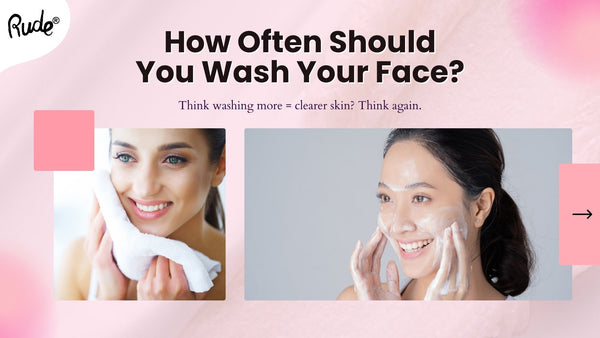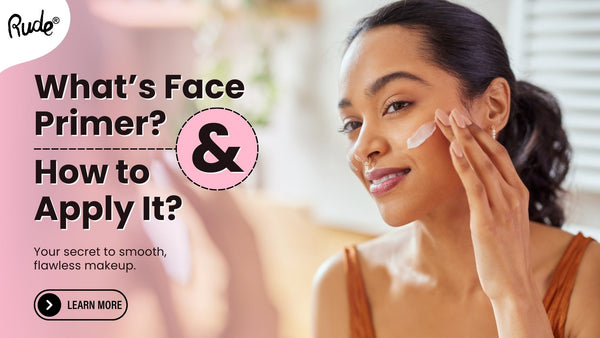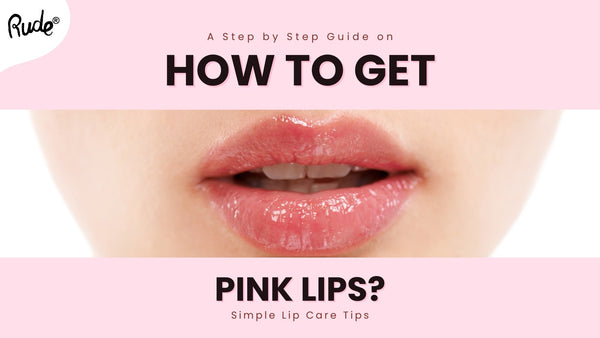The Ultimate Guide to Cleaning Makeup Brushes at Home – Easy Steps and Tips

Keeping your makeup brushes clean is essential for both your skin health and the longevity of your brushes. Dirty brushes can harbor bacteria, oils, and makeup residue that can lead to breakouts and skin irritation. Fortunately, you don’t need expensive products or a professional to clean your brushes effectively. This guide will show you how to clean makeup brushes at home, using both store-bought products and DIY methods, so your brushes stay in perfect condition.
Why Cleaning Your Makeup Brushes is Essential
Makeup brushes come into contact with your skin, oils, and makeup products daily. Over time, they collect bacteria, dead skin cells, and product build-up. Here are a few reasons why you should clean your makeup brushes regularly:
Benefits of cleaning your Makeup Brushes
- Prevent Breakouts: Dirty brushes transfer bacteria to your face, which can cause acne and irritation.
- Improve Makeup Application: Clean brushes apply makeup more smoothly, without streaks or uneven patches.
- Prolong the Life of Your Brushes: Regular cleaning prevents bristles from becoming stiff, damaged, or falling out.
- Protect Your Investment: Quality brushes can be expensive, so taking care of them saves money in the long run.
Step-by-Step Guide to Cleaning Makeup Brushes at Home
Here’s a simple, step-by-step method to clean your makeup brushes using common household items.
What You Need to Get Started
To clean your brushes, gather the following items:
- Gentle shampoo or liquid soap (like baby shampoo or dish soap)
- Olive oil or coconut oil (optional, for deeper cleaning and conditioning)
- Clean towel
- Small bowl
- Lukewarm water
- Silicone brush cleaning mat or a textured surface (optional but helpful)
Preparing Your Brushes for Cleaning
Before you start cleaning, sort your brushes by type:
- Face brushes (foundation, powder, blush)
- Eye brushes (eyeshadow, eyeliner)
- Lip brushes (lip color)
Check each brush for damage, such as loose bristles or handles. Damaged brushes may need to be replaced to avoid further shedding or application problems.
The Cleaning Process: Step-by-Step Instructions
- Wet the Bristles: Run the brush bristles under lukewarm water. Keep the brush angled downwards to prevent water from getting into the handle, which can loosen the glue over time.
- Apply Cleaner: Pour a small amount of gentle shampoo or soap into a bowl. For extra cleaning power, add a drop of olive oil to break down makeup residue.
- Clean the Bristles: Swirl the brush in the cleaning solution or gently massage the bristles on your palm or a silicone brush cleaning mat. Make sure to get into the center of the brush where most of the product builds up.
- Rinse Thoroughly: Rinse the brush under lukewarm water until the water runs clear. Repeat the cleaning process if necessary for heavily soiled brushes.
- Squeeze and Reshape: Gently squeeze out excess water with a clean towel and reshape the bristles with your fingers.
- Air Dry Properly: Lay the brushes flat on a towel with the bristles hanging off the edge of a counter to air dry. Do not dry them upright as water can seep into the handle, causing damage over time.
Pro Tip: Deep Cleaning for Stubborn Brushes
For brushes used with heavy products like foundation or gel liner, mix a solution of 1 part vinegar to 2 parts water for a deeper clean. Vinegar’s antibacterial properties help disinfect brushes while breaking down stubborn residue.
Natural Ingredients to Clean Makeup Brushes
If you prefer a natural approach, here are some common household ingredients that can be used to clean makeup brushes naturally:
- Apple Cider Vinegar: Mix one part apple cider vinegar with two parts water. Soak brushes for 10 minutes, then rinse thoroughly.
- Coconut Oil: Mix equal parts coconut oil and liquid soap. The oil helps to dissolve makeup while the soap cleans the bristles.
- Castile Soap: A biodegradable, plant-based soap that is gentle on skin and effective for cleaning brushes.
Tips for Drying Your Makeup Brushes Properly
Drying your brushes correctly is just as important as cleaning them:
- Lay Brushes Flat: Always lay brushes flat to dry to prevent water from seeping into the handle and loosening the glue.
- Avoid Heat: Never use a hairdryer or place brushes near a radiator or in direct sunlight. Heat can damage the bristles and warp the handle.
- Reshape Bristles: After squeezing out the excess water, gently reshape the bristles to their original form. This helps maintain the brush’s effectiveness and lifespan.
How Often Should You Clean Your Makeup Brushes?
Wondering how often to clean makeup brushes? Here’s a quick guide:
- Foundation and Concealer Brushes: Clean at least once a week to remove liquid or cream product build-up.
- Powder Brushes: Clean every 2-3 weeks.
- Eyeshadow and Eyeliner Brushes: Clean once a week, especially if you use different colors frequently.
- Lip Brushes: Clean after every use to avoid mixing colors and bacteria.
Tip: Make it a habit to clean your brushes on Sundays or another day that fits your schedule.
Common Mistakes to Avoid When Cleaning Makeup Brushes
- Using Hot Water: Hot water can loosen the glue that holds the bristles in place.
- Soaking Brushes: Never soak brushes in water; this can cause damage to both the bristles and the handle.
- Not Drying Brushes Properly: Always allow brushes to air dry fully before using them again. Damp brushes can harbor bacteria.
Extra Tips for Keeping Your Makeup Brushes in Top Condition
- Use a Brush Guard: To help brushes maintain their shape, use a brush guard while they dry.
- Store Brushes Correctly: Store your brushes upright in a clean, dry place to avoid dust and bacteria.
- Replace Old Brushes: Even with regular cleaning, brushes eventually wear out. Replace them as needed, especially if you notice bristles falling out or losing shape.
Conclusion: Take Care of Your Makeup Brushes for Better Skin and Better Makeup!
Regularly cleaning your makeup brushes is a simple habit that can greatly impact your skin health and makeup routine. Follow the steps in this guide to keep your brushes clean, extend their lifespan, and ensure your makeup always looks flawless. Take action today – grab your brushes and start cleaning with the easy methods shared above. Your skin and wallet will thank you!
Frequently Asked Questions
What is the best type of cleaner for makeup brushes: store-bought or DIY?
Both store-bought and DIY cleaners have benefits. Store-bought cleaners are convenient and often contain disinfectants. DIY cleaners, like mixtures of gentle soap and oil, are cost-effective and use natural ingredients.
Can I use rubbing alcohol to disinfect my makeup brushes?
Yes, rubbing alcohol can disinfect makeup brushes, but it should be used sparingly. Dip the bristles in a small amount of alcohol, then rinse thoroughly to avoid drying out the bristles.
How do I clean brushes used for liquid makeup versus powder makeup?
Brushes used for liquid makeup (like foundation) should be cleaned weekly with a stronger soap or cleanser. Brushes for powders can be cleaned every 2-3 weeks with a gentle soap.
Is it safe to clean makeup brushes with baby wipes?
Baby wipes can remove surface makeup, but they won't deeply clean or disinfect your brushes. It's best to use them only for quick clean-ups and follow up with a thorough wash.
How can I prevent my makeup brushes from shedding after cleaning?
To prevent shedding, avoid soaking the brushes, use a gentle cleaner, rinse thoroughly, and dry them flat. Reshaping the bristles after cleaning can also help maintain the brush's structure.
Are there specific cleaning techniques for synthetic versus natural brushes?
Yes, natural hair brushes (like those made of goat or sable) may need more delicate handling and conditioning, while synthetic brushes are more durable and can handle a variety of cleansers.
How can I speed up the drying process for makeup brushes?
To speed up drying, gently pat the brushes with a clean towel to remove excess water and place them in a well-ventilated area. Do not use direct heat sources like hairdryers.
What happens if I don’t clean my makeup brushes regularly?
Not cleaning your brushes regularly can lead to bacteria build-up, which can cause acne and skin irritation. It also affects makeup application and can cause brushes to wear out faster.
Can I use micellar water to clean my makeup brushes?
Micellar water can be used for a quick clean, especially on eye brushes. However, it may not remove all the buildup from foundation or cream products.
How do I clean dual-ended brushes?
Clean one end of the brush at a time while keeping the other end dry to prevent water from loosening the glue or damaging the bristles.
Can I use bar soap to clean my makeup brushes?
Yes, a gentle, fragrance-free bar soap can be effective for cleaning makeup brushes. Wet the brush and swirl it on the soap, then rinse thoroughly.
How do I know if my makeup brush is clean enough?
Your brush is clean enough when the water runs clear during rinsing, and there’s no makeup residue left on the bristles. The bristles should feel soft and look fluffy.
Is it necessary to condition makeup brushes?
Conditioning is especially beneficial for natural hair brushes to keep the bristles soft and prevent breakage. Use a small amount of hair conditioner and rinse thoroughly.
What should I do if the bristles of my brush are splaying or fraying?
If the bristles are splaying, it could be a sign of rough handling or improper drying. Gently reshape the bristles and ensure to dry them flat. Replace the brush if it doesn’t return to its original shape.
Are there any tools to help clean makeup brushes more effectively?
Yes, tools like silicone brush cleaning mats, gloves, or electric brush cleaners can help to thoroughly clean your brushes and remove stubborn product buildup.




